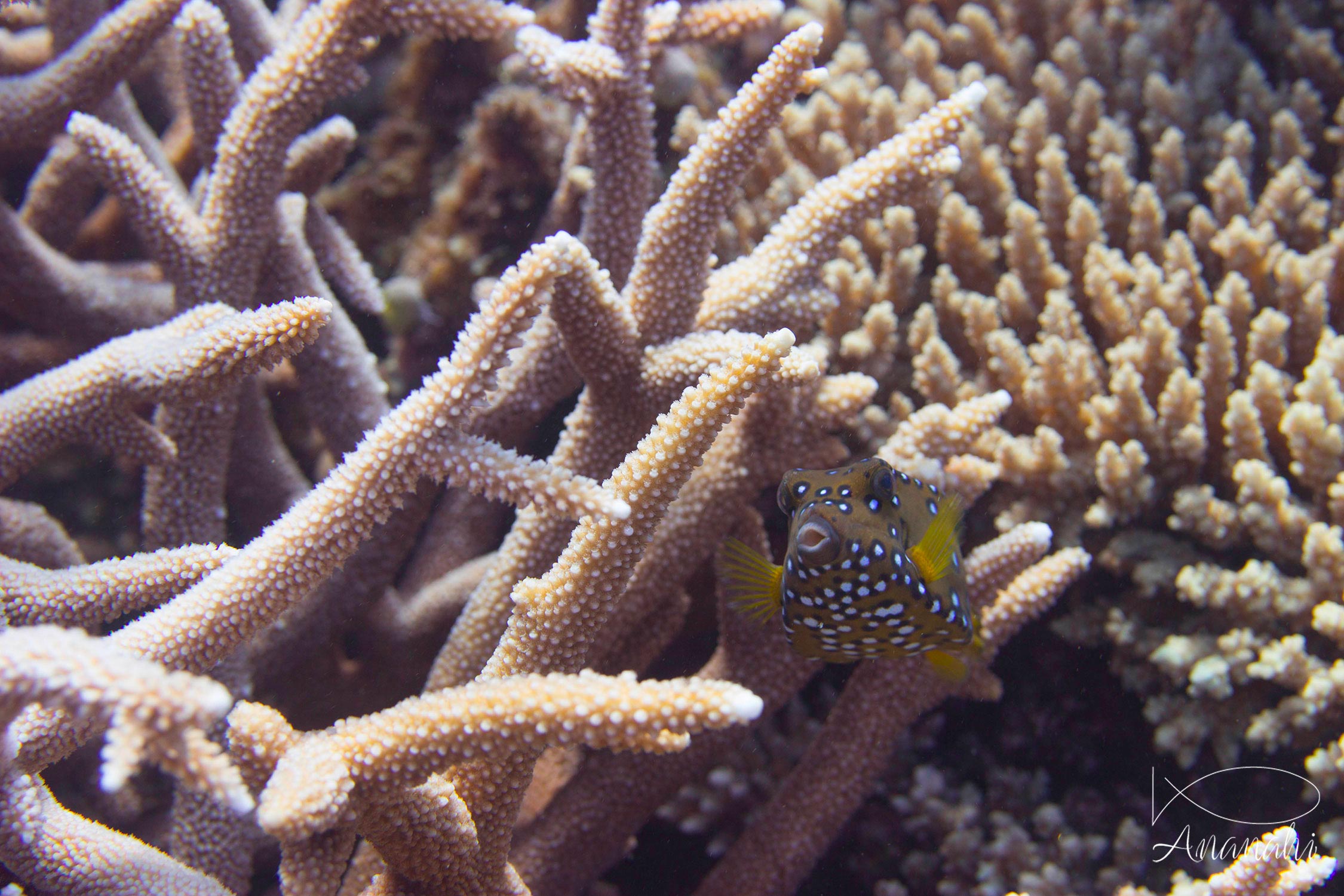
Scientific name: Ostracion cubicus
Size: Up to 17.7 inches
Color: brown to blue, yellow
Distinguishing feature: Shape of rectangular box. White tasks circled in blue or black
Where did we see it: Bali and Gili, Zanzibar, Thailand, Mayotte, Maldives, Raja Ampat

Scientific name: Ostracion cubicus
Size: Up to 17.7 inches
Color: brown to blue, yellow
Distinguishing feature: Shape of rectangular box. White tasks circled in blue or black
Where did we see it: Bali and Gili, Zanzibar, Thailand, Mayotte, Maldives, Raja Ampat
The juvenile is yellow with black dots. They are generally found near the "Acropora" corals.
The Yellow boxfish feeds mainly on algae but also invertebrates.
Thanks to his fins, he is able to go out of his way, back up or turn around, a bit like a helicopter.
It's a solitary species and quite fearful with divers.
Some sharks can stay motionless on the sand (white tips reef sharks, nurse sharks, etc.).
These sharks don't have to swim to bring oxygen to their gills like other sharks (grey, hammerheads tc.)
Mammals have a horizontal tail.
Fishes have a vertical fin.
Turtles are in economy mode when they are sleeping. If they are woken during night, they may not have enough air to return to surface.
So, please be careful during night dives!